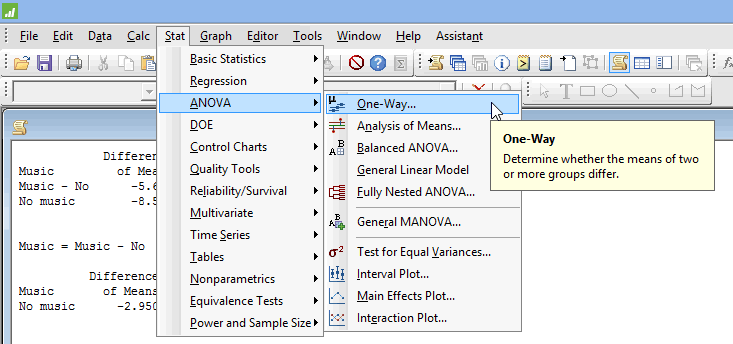

Random sampling can have a huge impact with small data sets, resulting in a calculated standard deviation quite far from the true population standard deviation. Most people are surprised that small samples define the SD so poorly. When you compute a SD from only five values, the upper 95% confidence limit for the SD is almost five times the lower limit. From the n=5 row of the table, the 95% confidence interval extends from 0.60 times the SD to 2.87 times the SD. But the true standard deviation of the population from which the values were sampled might be quite different. The sample standard deviation computed from the five values shown in the graph above is 18.0. With small samples, the interval is quite wide as shown in the table below. How wide is the CI of the SD? Of course, the answer depends on sample size (N). If you assume that your data were randomly and independently sampled from a Gaussian distribution, you can be 95% sure that the CI computed from the sample SD contains the true population SD. Interpreting the CI of the SD is straightforward.
#Calculate confidence interval minitab express free
A free GraphPad QuickCalc does the work for you. It's not done often, but it is certainly possible to compute a CI for a SD. The sample SD is just a value you compute from a sample of data. Another example is a confidence interval of a best-fit value from regression, for example, a confidence interval of a slope. The idea of a confidence interval is very general, and you can express the precision of any computed value as a 95% confidence interval (CI). You are probably already familiar with a confidence interval of a mean. The SD of your sample does not equal, and may be quite far from, the SD of the population.

Or you may have randomly obtained values that are far more scattered than the overall population, making the SD high. But how accurate is that standard deviation? Just by chance, you may have happened to obtain data that are closely bunched together, making the SD low. It is straightforward to calculate the standard deviation from a sample of values. The Standard Deviation of a sample is not the same as the Standard Deviation of the population A confidence interval can be computed for almost any value computed from a sample of data, including the standard deviation (SD).


 0 kommentar(er)
0 kommentar(er)
